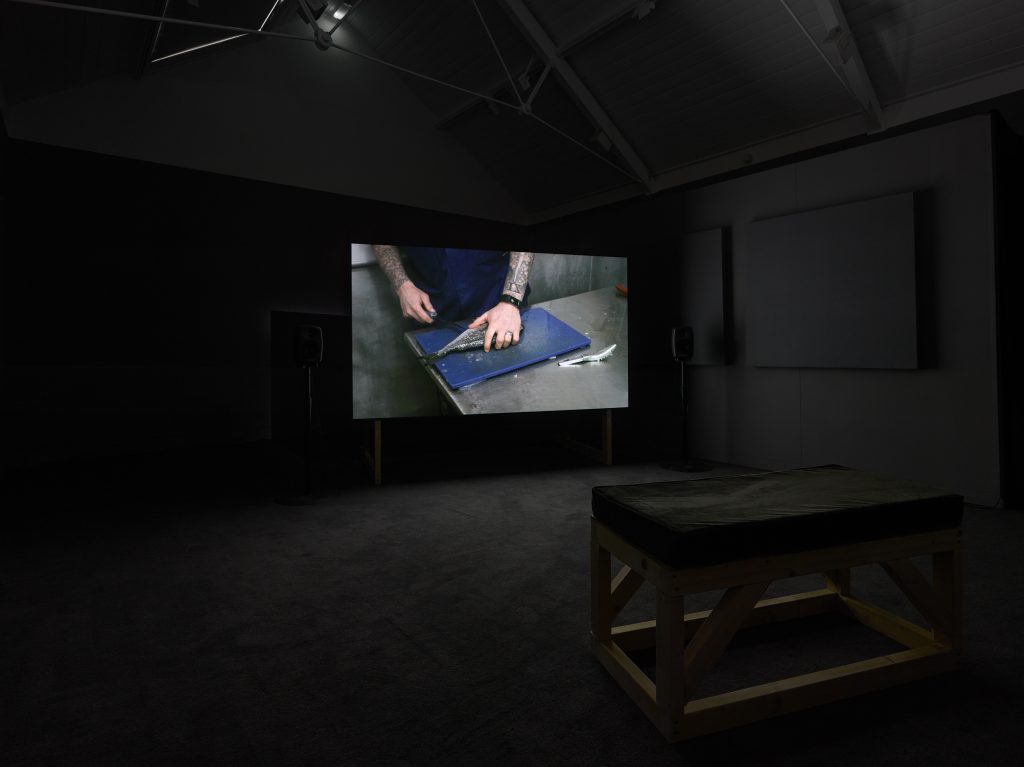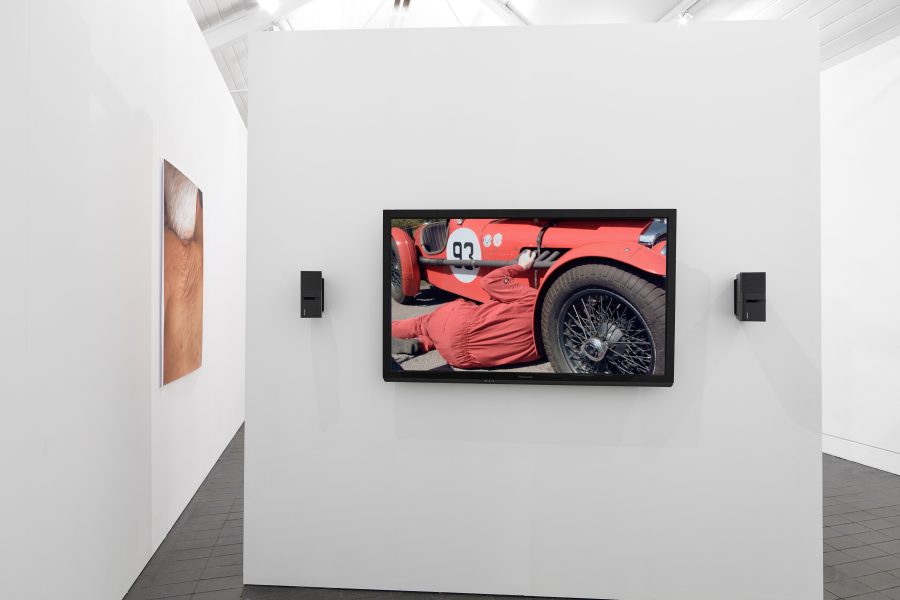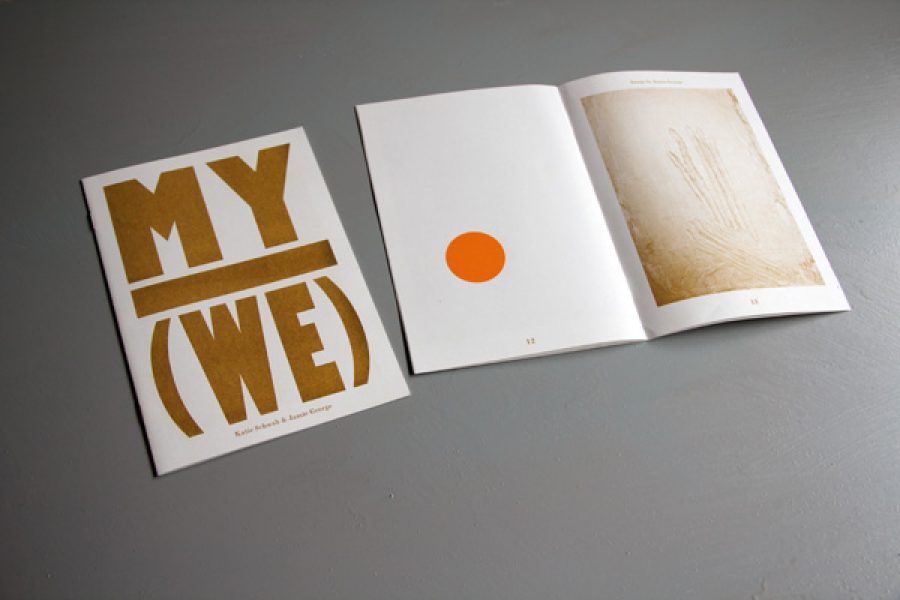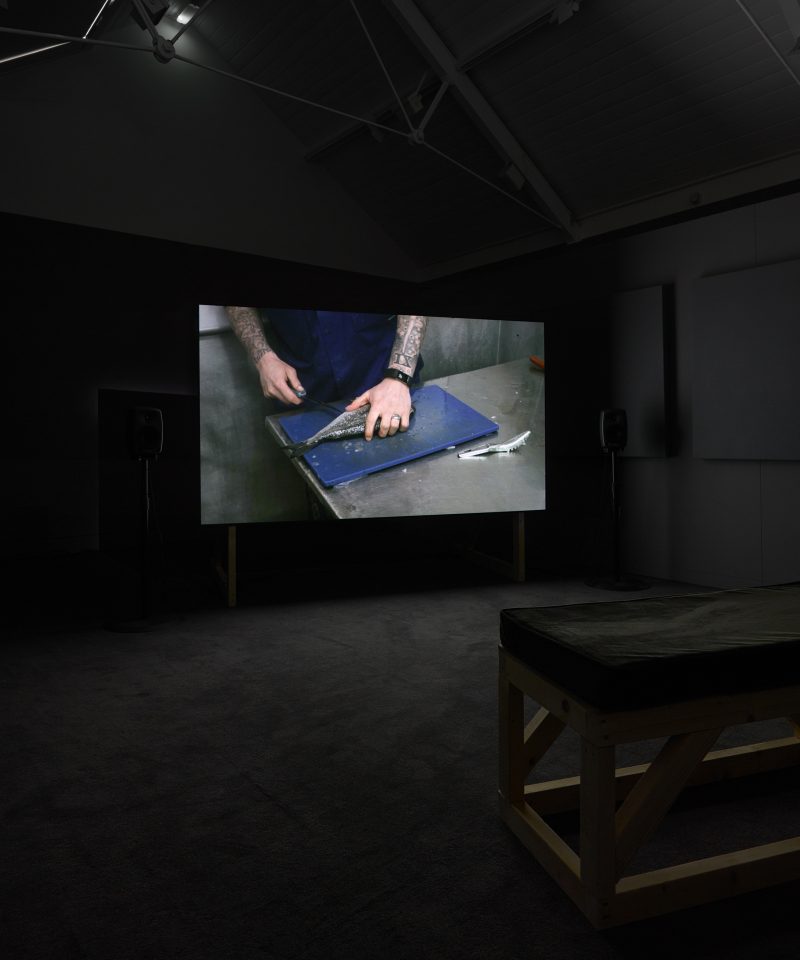London, 1668
The Bawdy House Riots broke out on Easter Monday, when a crowd attacked a brothel in Poplar.
The next day, hundreds descended on the main red light districts of London, armed with iron bars, polaxes, long staves and other weaponry.
The final assaults came on Wednesday, where reportedly thousands raided bawdy houses in Moorfields.
After the rioting subsided, a leaflet began to circulate.
So opens the first minute of Georgia Horgan’s Dear Barb, with a crash history of the Bawdy House Riots and an ensuing leaflet called “The Poor Whore’s Petition”. The opening lines of the film are a partial account of a complex set of dynamics that were vibrating through London in 1668 that led to large riots across a few locations: Whetstone Park, Saffron Hill and the Moorfields area of East London (now Finsbury Circus).
Dear Barb follows an unnamed protagonist who boards the tube, travels to the City of London, and walks the route the mobs of workmen took, through Smithfield, Farringdon and Barbican. Interspersed between the protagonist’s re-traced route are shots of dogs in London parks, a visit to the British Library to see the actual Poor Whore’s Petition, and a fish being gutted. A narrator reads Georgia’s reimagining of the Petition, a letter from brothel owner Elisabeth Creswell to Barbara Villiers, Lady Castlemaine, influential mistress of King Charles II.
Anachronistic against the tone and content of the narration, the film’s protagonist wanders an identical pathway to the mob, but at a speed they would likely never had been able to travel, at a population density comprised of a very different consistency, the sounds and smells all out of place. The film could be thought of as a result of an impossible psychogeographic exercise. What remains amongst all these differences in landscape, however, is the influence that the power struggles between aristocrats and parliamentarians have left on London’s plan.
Henry Charles Fitzroy, for instance, Barbara Villiers’ son with King Charles II, left his name on many streets of the Euston area of Central London (Fitzrovia). London is a city ripe for getting lost in the dense thicket of pre-industrial aristocratic relations that structure how we move through the city. Even as the monarchy today ‘has no power’, those families’ property interests determine where average citizens can freely walk. Furthermore, the political wrestle between the Aristocracy and Parliament after the Restoration meant that the two fought to control not whether there would be a concept of ‘where average citizens can freely walk’, but that they fought to make it so that their interests controlled who was afforded the sovereignty of average citizen and then, additionally, where they could walk.
Walking and fucking are adjacent sites of biopolitical control, Dear Barb seems to suggest. The riot was the largest, Horgan recalled in a recent conversation with Huw Lemmey, of a longstanding series of attacks on brothels as aristocrats and parliamentarians argued over the ‘issue’ of prostitution. As an object for political formation, rather than a simple for/against debate, both parties vied for the right to discipline it according to their own values. Sound familiar?
With Dear Barb, Horgan gestures to a burgeoning interest in controlling sexuality, emerging at the very same moment as roaming and foraging were being curtailed. Although Horgan never directly references Silvia Federici’s Caliban and the Witch in the film, her discussion with Lemmey links this riot to a move to control sexuality, to configure it as something that was not legitimate work, or rather not labour that could be paid for, but rather a divine right (for white men) or moral obligation (for everyone else). Meanwhile, other types of work were incentivised or made requisite. Another essay on the formulation of whiteness and maleness in this same period lies in wait. England’s entrance into the trade of enslaved Africans is cited in the same generation, 1640. “Charlestown, Carolina” was colonised only five years prior to this blow up, in 1663, at the behest of King Charles II.
This complex dynamic of which we are given a portion is one between land, property, city, roaming, walking and sex. This relationship is highlighted in theories of 18th and 19th century flaneur and the male gaze, sure, but citing the dynamic in the 1660s draws the removal of open land in closer proximity to female sexuality being declassified as work. Open land is replaced by property. “Women” (Foucault via Preciado suggests that the gendered category of woman didn’t have the same boundaries as dominate at present), some of whom traded sex in the brothels that were part of the economy that included grazing open land, were prohibited from selling. And as Federici points out, when women become property, encouraged into nuclear family marriage, and coerced to produce tools for earning money ensuring the continuation of patrilineal wealth (birthing and rearing sons), they are not paid for it.
The Wages for Housework movement clearly has genealogy in this moment, and so do Sex Workers’ Rights movements of today (see the work of: SWARM Collective, Sex Workers’ Opera, Third Wave Fund). Also, SESTA/FOSTA could be thought of as a taming of what otherwise might have been a digital common (Craigslist, Instagram) at the expense and endangerment, again, of ‘women’ (more accurately, anyone who operates as a vendor of sexuality outside of cis-patriarchal nuclear family sex). Removing the possibility of organising sex work from Craigslist is one way that sex workers are precluded from being recognised as ‘average citizens’ with a protected ability to earn money.
Horgan’s film is a work that seems to come from the process of evaluating a contemporary political moment, and rather than marvelling its supposed unprecedented this or that, highlights other moments that mirror its dynamics. Everything has already happened. Who can legally roam through this and other cities, whose sex is sanctioned, what constitutes labour – all in formulation, still.
With thanks to Rowan Powell (PhD Candidate, UC Santa Cruz) from whom I have absorbed a great deal of my understanding of the period in England’s history upon which Georgia’s film is based.
Some texts that I found useful:
Caliban and the Witch, Silvia Federici (2004)
Use of Land, The Raven Anarchist Quarterly #17 (1992)
“Whiteness as Property”, Cheryl Harris (2005)
“The Belly of the World: A Note on Black Women’s Labours”, Saidiya Hartman (2016)
History of Sexuality, Vol 1., Michel Foucault (1978)
Testo Junkie, Paul Preciado (2013)



